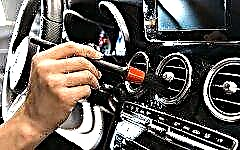

The content of the article:
- Road safety
- Emergency moments
- Driving style
- Lack of general driving style
- Nuances of training young drivers
- Pedestrian crossings: how to overdo it when solving problems
- Disabled parking and bike paths
From the outside, it sometimes seems that drivers are a kind of separate caste, a special class, a stratum of society that lives according to certain rules and laws. That is why drivers from different countries can find many common features.
The closer peoples are, the more their drivers have in common. This is probably why drivers from Russia who come to Belarus do not experience much stress: the driving style here is largely reminiscent of the Russian one. At the same time, Belarusian drivers will find something to surprise you with.
1. Road safety

(traffic police service on the roads of Belarus)
How do you know if drivers drive well in a particular country? The number of road inspectors and the number of violation reports they have drawn up is not an indicator.
Perhaps the most correct thing would be to assess how safe the road traffic is. To do this, you can analyze the statistical data on fatalities in road traffic accidents for a year in a particular country.
There is an official international statistics on the number of deaths in car accidents on the roads of large cities. The figures are based on one million inhabitants:
- in Stockholm (Sweden) - 9 people per 1 million inhabitants per year;
- in Minsk (Belarus) - 21 people;
- in Warsaw (Poland) - 33 people;
- in Kiev (Ukraine) - 68 people;
- in Moscow (Russia) - 74 people.
A very important conclusion can be drawn from the above data: no matter what the Belarusians and foreign guests think of Belarusian drivers, it is quite safe on the roads of Belarus. This means that Belarusian drivers don't drive so badly!
2. Emergency moments

In the photo: traffic on the streets of Minsk
But, of course, not everything looks as smooth as we would like. Many guests of Belarus note that the existing level of safety on the roads is achieved rather due to the calm disposition of the inhabitants of this Slavic country, their general leisurely and gentleness, the absence of a high degree of irritability in comparison with the same Russian Federation and the desire to prove their “coolness” behind the wheel of a car.
Belarusians are less emotional, they do not “flare up” quickly, and therefore many emergency situations on these roads do not get dangerous or criminal development. But this does not mean that such situations do not arise at all.
What typical emergency situations do Belarusian drivers “sin” with? There are many of them, and anyone who visits this country by car should know them:
- at intersections, you can often see how the driver from the secondary road "sticks his nose" to the main road, piously sure that he is seen and will certainly go around, turned away;
- at the same intersection, drivers are in no hurry to turn on the turn signal, so it can be difficult to understand in advance where the car will move in front of you;
- from the junction, the motorist can immediately go to the right lane, bypassing the acceleration lane;
- if on the right lane a passenger car catches up with a lorry, it can, as they say, “without looking,” change lanes in front of the car driving in the left lane;
- at the same time, on the road in Belarus, you need to be prepared for the fact that the driver of a car that is being overtaken suddenly increases speed, obviously deciding that he is not on the road, but on the race track.
Experienced motorists who come to this country and encounter the above unpleasant moments on the roads believe that this is a consequence of the general low professional level of motorists, as well as a reluctance to show attention to other road users.
3. Driving manner

In the photo: Truck driver and cars on the way from Minsk
The Belarusians themselves often admit that it is easier for them to bypass a pedestrian or another car, but not to communicate, to find out something, in a word - to contact. Because of this, there are many problems and misunderstandings.
Compared to Russia, it turns out that Russians are not afraid to communicate, point out, teach. The Belarusians avoid such situations whenever possible.
As a result, it turns out that drivers are often too cautious, show indecision on the road, start maneuvering with a delay, and take a long time to decide to change lanes. For residents of large Russian megalopolises, accustomed to more dynamic driving, such behavior on the road causes bewilderment, and there they are not far from problems.
From the point of view of the Belarusian drivers themselves, visitors from Moscow, St. Petersburg or Kiev are accustomed to "rushing about like crazy" on the roads, although, most likely, this is just a consequence of the greater experience of traveling in the dense traffic of the megalopolis at higher speeds.
In order to understand the peculiarities of the driving mentality in Belarus, it is enough to pay attention, for example, to the unspoken rules of rebuilding. Here the driver, who wants to change from row to row, turns on the turn signal and waits for one of two possibilities: either he will be allowed to pass, informing about it by the blinking of the car headlights, or a "window" will naturally appear, into which you can dive without haste (!).
Compare this style with how it is customary to rebuild in Moscow: turn on the turn signal and quickly start rebuilding, because if you “catch the crows” and wait, you will most likely be stunned by beeps from those driving behind, fearing a traffic jam.
On the Belarusian roads, however, this “Moscow haste” will cause indignation, and God forbid, you cut someone off!
4. Lack of general driving style
In addition to general traffic rules, in any country there are unspoken rules and nuances known to most local drivers.
In Belarus, this is not so simple. Belarusian drivers themselves claim that the problem with Belarusian roads is that local drivers do not have a common driving style. Those who travel to Russia often talk about the Russians driving: "it feels like they were all taught by the same instructor." Belarus is a completely different matter.
You don't have to go far for examples. On the highway, where there is only one lane in one direction, truck drivers can warn a passenger car walking behind that it is worth going to overtake in the oncoming lane: the turned on left turn signal signals “the oncoming lane is busy”, and the right one - “overtake, the oncoming lane is free”.
At the same time, if not the majority, then many drivers perceive such an alarm system exactly the opposite, which generates emergency situations on the road.
5. Nuances of training young drivers

Photo: Belarusian highway
Many believe that the above-described lack of a unified perception of the unspoken rules of movement on highways is a consequence of the fact that driving in Belarus is taught exclusively in driving schools.
In many countries around the world, there is a legal technique such as training a driver with a relative. In the same United States, a teenager has the right to drive a car if a parent sits next to him, who, of course, has a license. Thus, a beginner, even before joining a driving school, learns some basics, at the same time learning unspoken driving rules, the same driving mentality common to a region or the entire country.
Everything is different in Belarus. Here, such driving falls under the law on driving without a license or transferring control of a vehicle to a person who does not have the right to drive a car, and, accordingly, is punished.
As a result of the different driving style, a situation typical for Minsk highways develops: someone moves in the extreme left lane with the prescribed speed of 60 km / h, while someone thinks that this lane should be driven faster or not at all ...
The most cautious drivers, who avoid changing lanes, move, as a rule, in the middle lane, while the right one is empty at this time. And surely in this situation there is someone who thinks that playing "checkers", maneuvering along all three rows will help him save time and drive faster. As a result, such a driver can slow down the entire stream of cars, confusing others with his chaotic rearrangements. The result is logical: driving "at general speed" in Belarus is not synonymous with safe driving.
However, guests of Belarus may also be struck by the flip side of this medal: excessive self-confidence is not a strong point of Belarusian drivers, but therefore they do not have daring, based on self-confidence, the desire to “slip through”, which often in Russia leads to numerous accidents. situations.
Perhaps this particular feature of the Belarusian mentality leads to the fact that the mortality rate on Belarusian roads is one of the lowest in Eastern Europe.
6. Crosswalks: how to overdo it when solving problems

Photo: unregulated pedestrian crossing in Minsk
Over the past ten years, Belarusian traffic law rangers have devoted a lot of effort to maximize the safety of pedestrians crossing the highway.
In 2015, another new version of the traffic rules was adopted, in which the following paragraph is present: "When approaching an unregulated crossing, the driver must drive at a speed that allows, if necessary, to give way to a pedestrian."
Unfortunately, this point of traffic rules did not at all lead to the effect that the creators of the rules hoped for: the "cobra effect", notorious since the time of the English colonies, made itself felt. In an effort to reduce the snake population, the British in the Indian colony announced that they would pay money for each snake head. Enterprising Hindus began to breed snakes and sell their heads to white sahibs. Upon learning of this, the British stopped paying, and immediately the snakes, which the Indians managed to breed, were released into the wild: the population, instead of decreasing, only increased. This is a prime example of the fact that sometimes trying to solve a problem can only make it worse.
Similarly, the situation with pedestrians turned around in Belarus: after the adoption of the above-mentioned traffic rules point, pedestrians gained excessive confidence that the car would always have time to stop if the pedestrian stepped onto the zebra crossing. But, alas, an iron horse always slows down more slowly than human legs. Therefore, the adopted traffic rules point added nerves to Belarusian drivers, and it did not affect the safety of pedestrians very well.
According to statistics, violations by pedestrians are a very common cause of fatalities on the roads of Belarus.
7. Handicapped parking and bike paths

But what drivers of other Eastern Slavic countries should really learn from Belarusians is their attitude to parking for disabled people. Unfortunately, for the same Russian motorists, parking in the place reserved for disabled drivers is still considered in the order of things. You won't see this in Minsk.
The Belarusians have spent a lot of effort to introduce various social advertising, which helps to educate the consciousness of domestic drivers. For example, under the sign of parking for disabled people in Minsk, you can see a sign that says: "Are you sure you want to be in our place?"
As for cycling, its rules in Belarus differ significantly from Russian rules: here a cyclist is obliged to ride not on the carriageway, but on the sidewalk, and only in the absence of a sidewalk has the right to move along the carriageway. Compare with the rules in force in the Russian Federation: a cyclist is obliged to move along a special cycle lane, if there is no one - along the carriageway on the right, and only if both the first and the second is not possible, he has the right to travel on a pedestrian sidewalk.
Conclusion
As follows from the above features of the driving mentality in Belarus, drivers who come to this country should get acquainted in advance with some of the nuances in the local driving style, paying special attention to pedestrian crossings and lane changes.
At the same time, it should be noted that, in general, the situation on Belarusian roads is characterized by a low level of nervousness and relatively high safety, which cannot but please motorists visiting this hospitable Slavic country.











